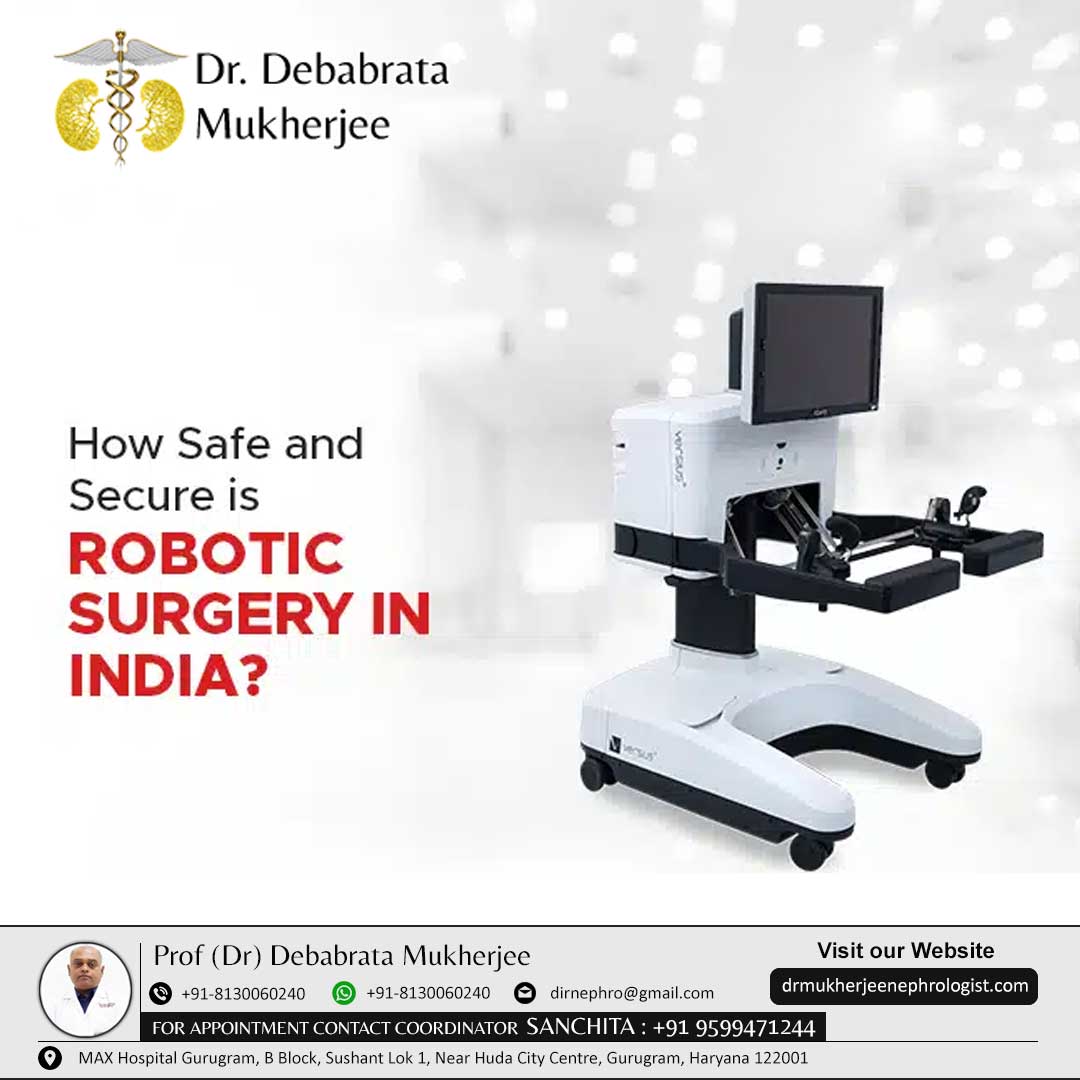What are the potential risks and complications of robotic urology surgery in India?
Robotic urology surgery, while offering several advantages, also carries potential risks and complications. Here are some that are specifically relevant in the context of India, though many are common worldwide:
General Risks and Complications:
-
Surgical Risks:
- Infection: As with any surgery, there is a risk of infection at the incision sites or internally.
- Bleeding: There may be intraoperative or postoperative bleeding, potentially requiring transfusion.
- Anesthesia Risks: Complications related to anesthesia, such as allergic reactions or respiratory issues, can occur.
-
Technical Issues:
- Equipment Malfunction: Robotic systems can experience technical failures or malfunctions during surgery.
- Surgeon Skill Level: The outcome can depend on the surgeon’s experience and proficiency with the robotic system.
-
Procedure-Specific Risks:
- Damage to Surrounding Organs: There is a risk of accidental injury to adjacent organs, such as the bladder, bowel, or blood vessels.
- Urinary Issues: Complications can include urinary incontinence or obstruction.
- Nerve Damage: Potential for nerve damage, leading to issues like erectile dysfunction in prostate surgeries.
-
Postoperative Complications:
- Blood Clots: Patients are at risk for deep vein thrombosis (DVT) or pulmonary embolism (PE).
- Delayed Healing: Some patients may experience slower healing of incisions or internal tissues.
- Scarring and Adhesions: Internal or external scarring and adhesions may develop, potentially causing long-term issues.
Specific Considerations in India:
-
Access to Technology:
- Availability: Robotic surgery systems may not be widely available in all regions, limiting access to the latest technology.
- Maintenance and Support: Ongoing maintenance and technical support for robotic systems can be challenging and costly.
-
Cost and Insurance:
- Affordability: Robotic surgery is generally more expensive than traditional methods, which can be a barrier for many patients.
- Insurance Coverage: Not all insurance plans cover robotic surgery, leading to out-of-pocket expenses.
-
Postoperative Care:
- Follow-up: Ensuring consistent and high-quality follow-up care can be challenging in some areas, affecting recovery and management of complications.
- Infection Control: Hospitals with varying standards of hygiene and infection control practices can influence the risk of postoperative infections.
-
Training and Expertise:
- Surgeon Training: The availability of well-trained and experienced robotic surgeons can vary, impacting the quality of care.
- Continuous Education: Ongoing training and certification for surgeons in the latest techniques and technologies are essential.
Mitigation Strategies:
- Choose a Reputable Facility: Opt for hospitals with a good track record and accreditation.
- Experienced Surgeon: Ensure the surgeon has substantial experience and training in robotic surgery.
- Preoperative Preparation: Follow all preoperative instructions and prepare adequately for surgery.
- Postoperative Care: Adhere to postoperative care guidelines and attend all follow-up appointments.
Consulting with a Dr. Debabrata Mukherjee, who can assess individual risks and benefits is crucial in making an informed decision about robotic urology surgery.
Visit : https://drmukherjeenephrologist.com/
Recent Posts
- Bringing Advanced Kidney Care Closer to Home: Medanta’s New OPD in Jabalpur
- Supporting Kidney Health with a Nutrient-Rich Diet: Expert Advice by Dr. Debabrata Mukherjee
- Dr. Debabrata Mukherjee Shares Insights on Kidney Transplant Safety in The Indian Express
- Urine Analysis: The “Liquid Biopsy” of Your Kidneys
- Why Do Kidney Disease Patients Experience Itching? Understanding the Causes and Solutions


Prof (Dr) D Mukherjee is an alumnus of the prestigious Armed Forces Medical College, Pune where he did his MBBS & MD (Medicine). Subsequently he went on to do his DM (Nephrology) from PGIMER Chandigarh, which is the foremost training institution for nephrology in India.